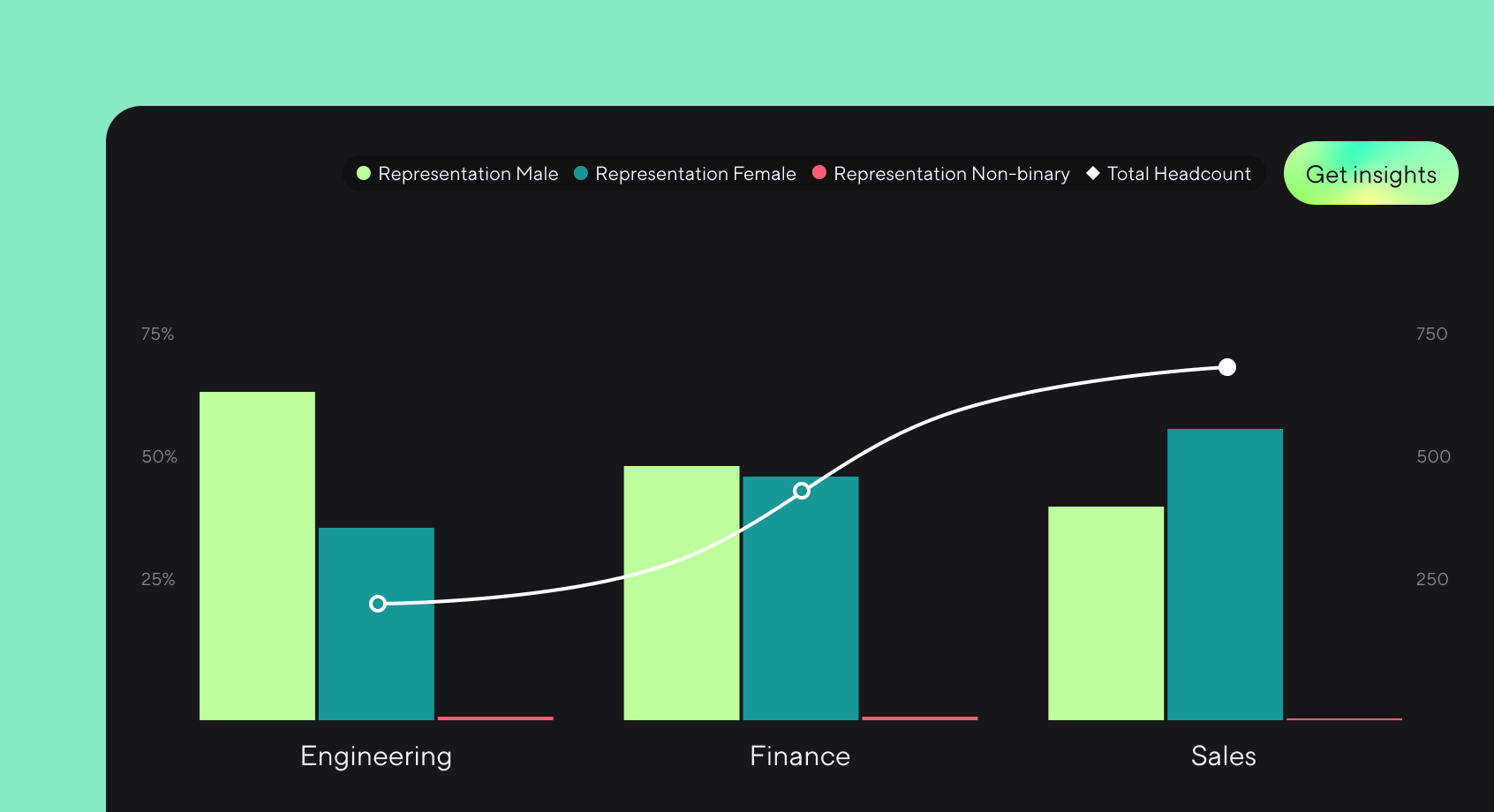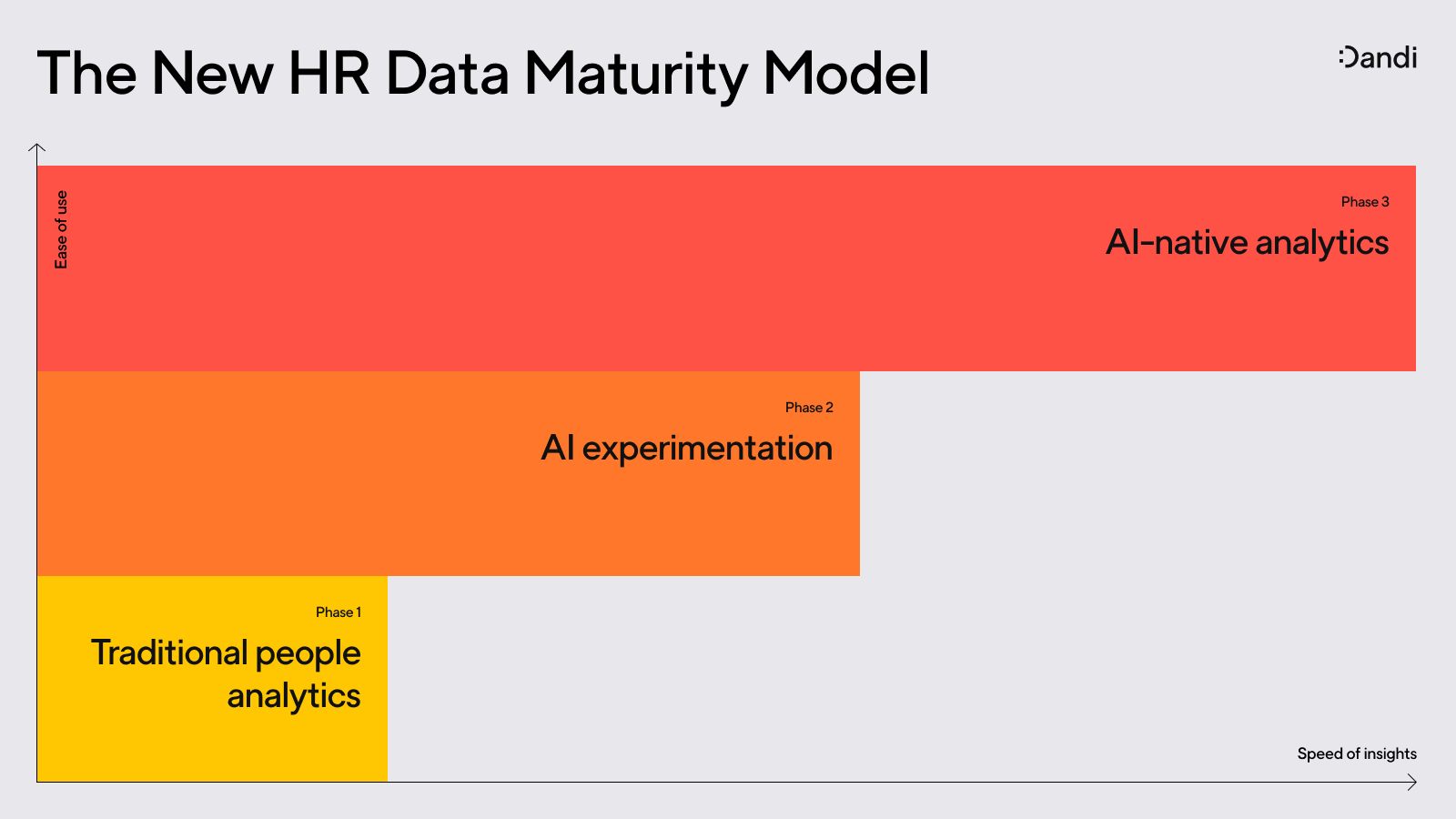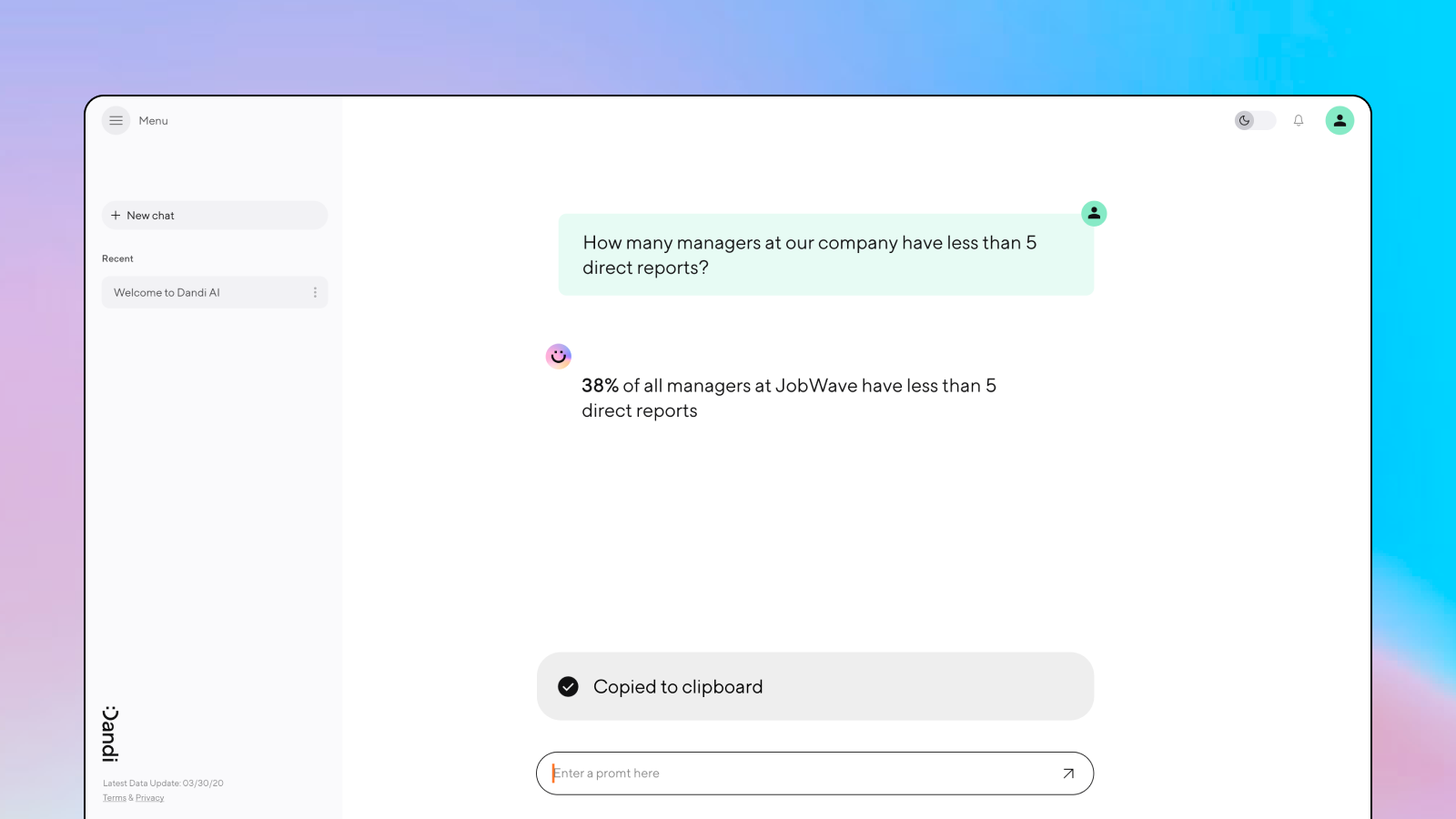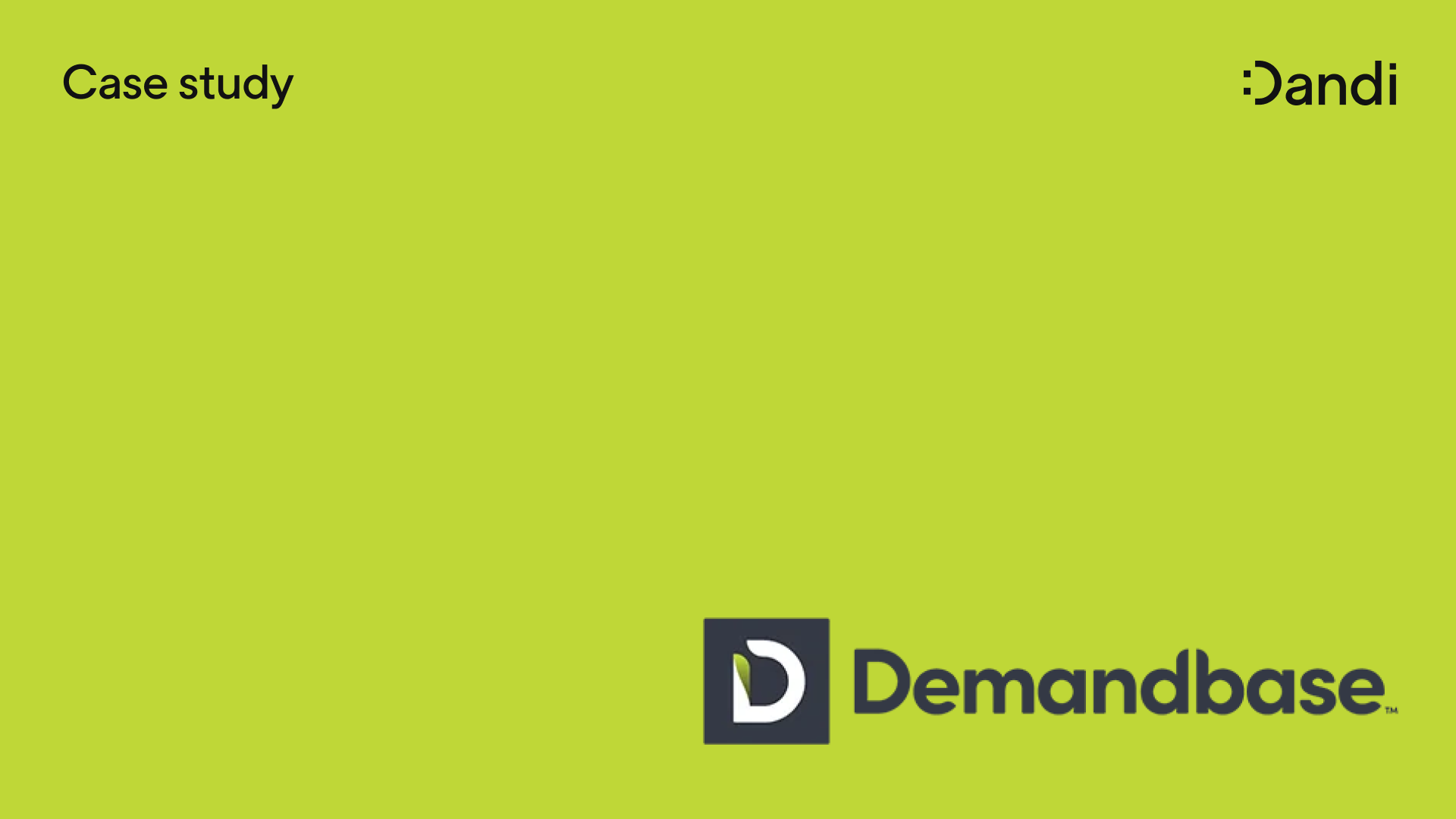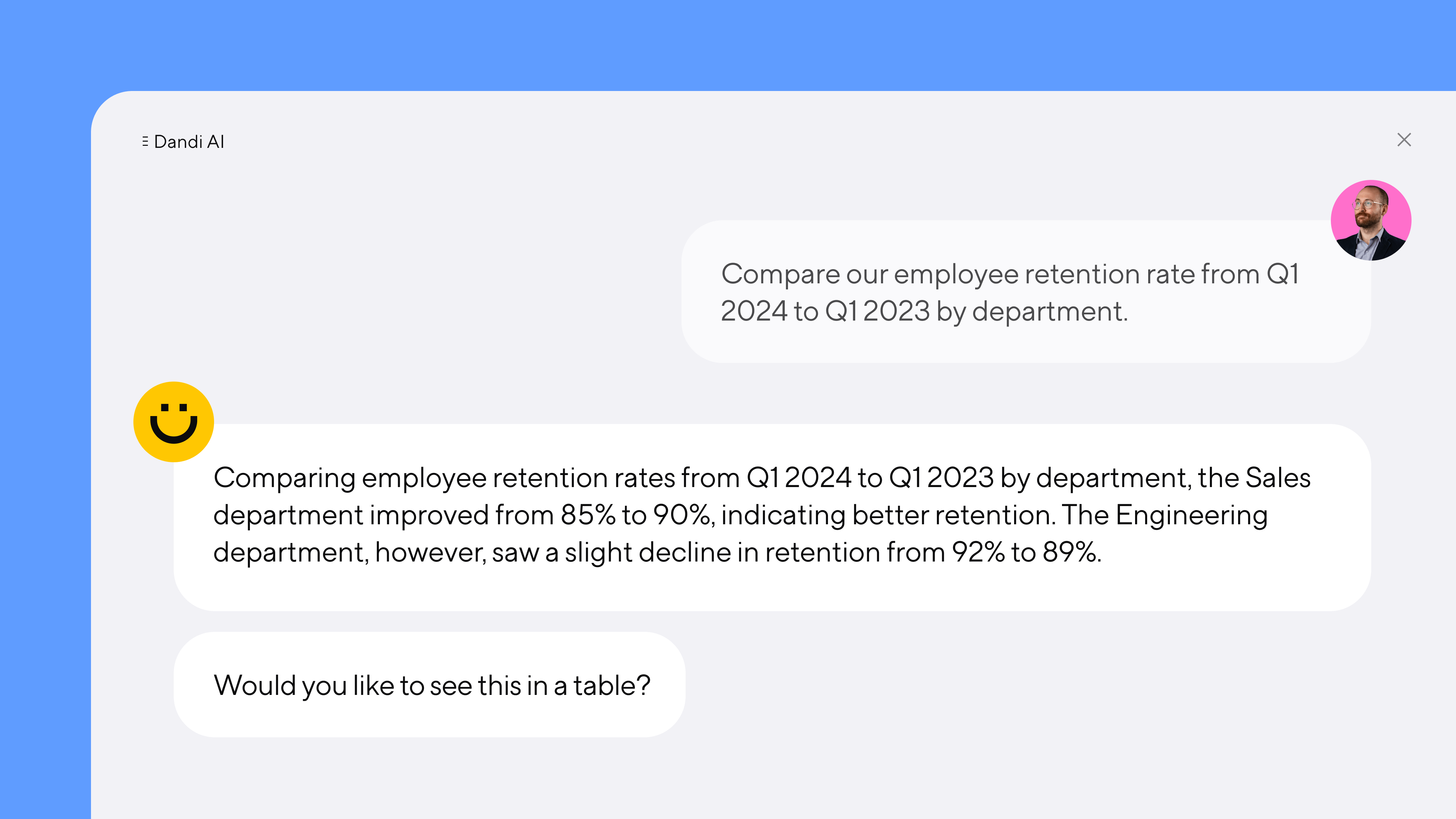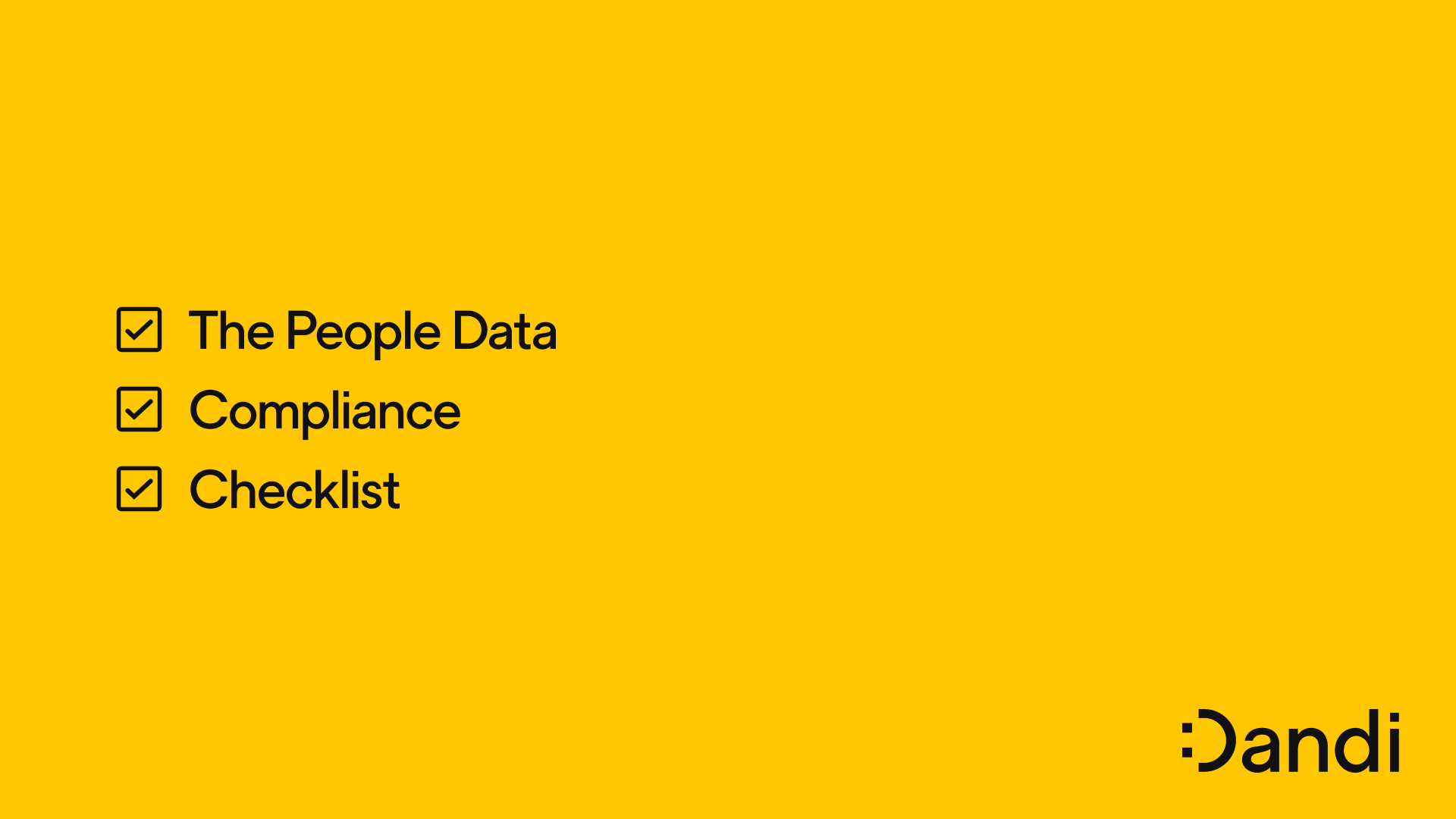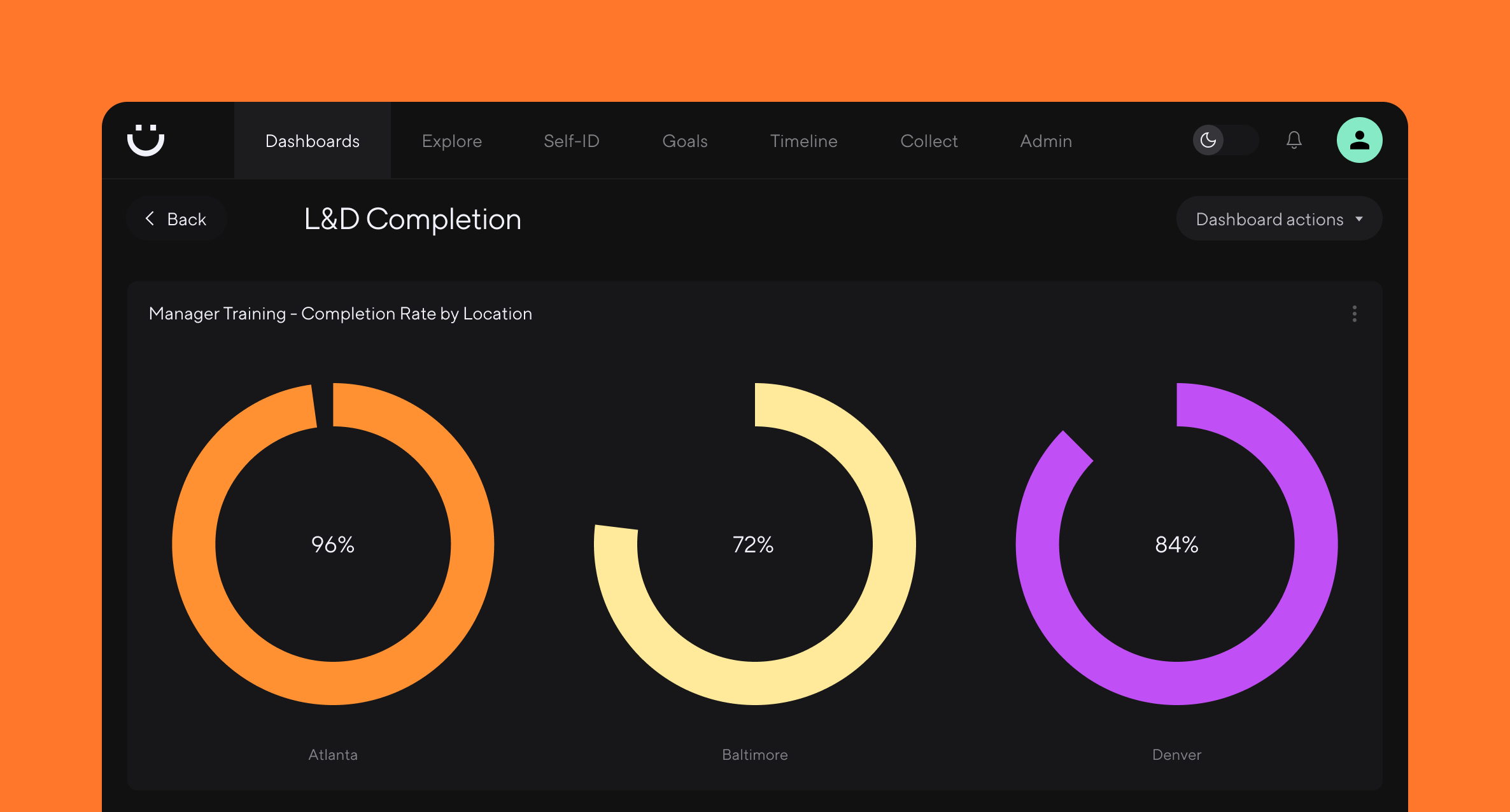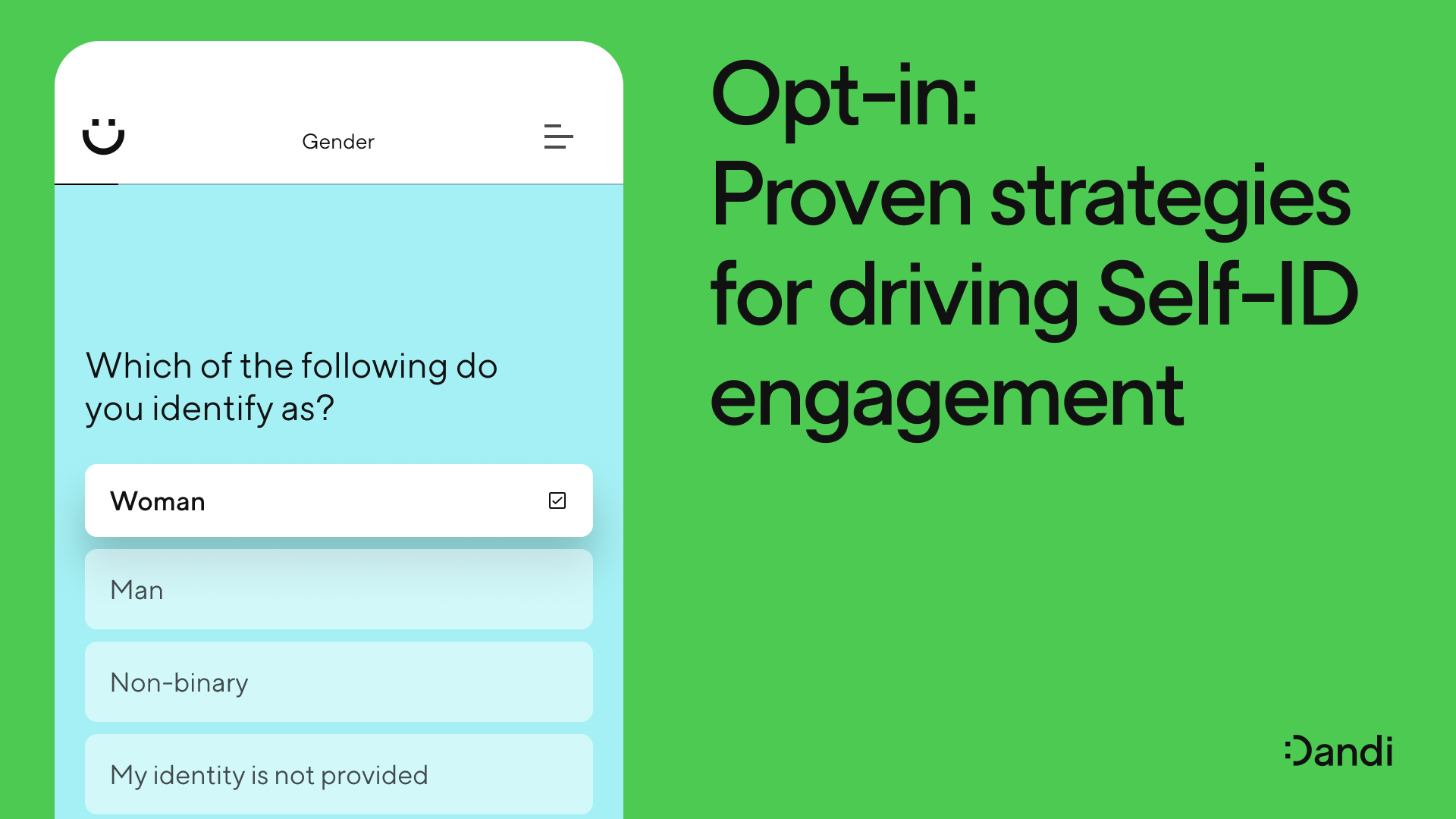Introducing Dandi

Jeff Fernandez – Oct 13th, 2022
We’re coming out of stealth mode to give businesses everywhere the data-driven insights they need to advance their DEI efforts.
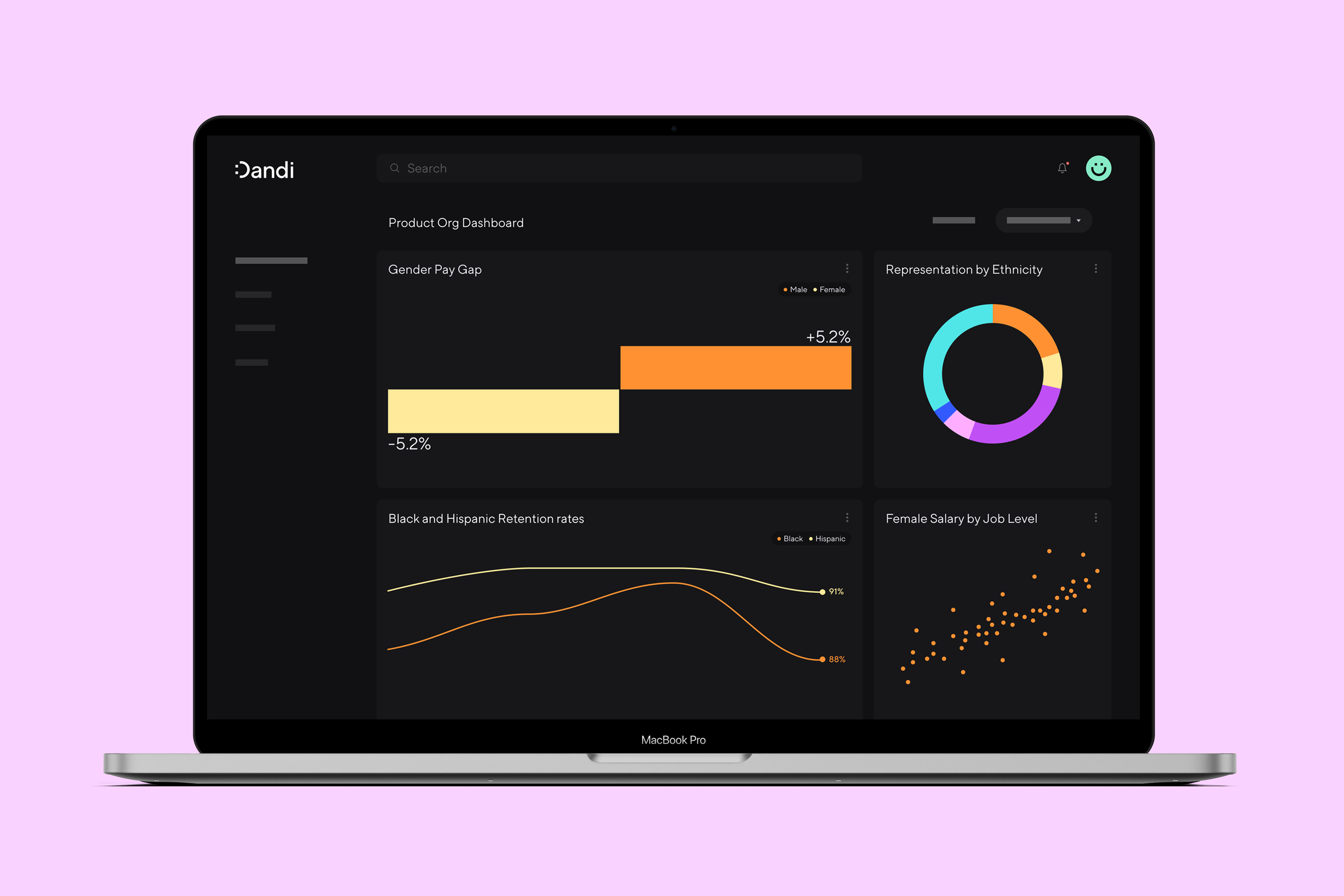
A new view of DEI.
Since 2018, we’ve been building a new company. Today we’re excited to share it with the world.
Dandi is an analytics platform built to track and measure Diversity, Equity, and Inclusion (DEI) across every part of a business. Already used by organizations of all sizes—from publicly traded companies to high-growth startups—Dandi exists to solve a core problem in DEI: data.
While data has transformed many aspects of business, DEI has lagged behind. Without it, companies have been unable to accurately diagnose problems, set benchmarks, or measure progress. Imagine trying to optimize a website without Google Analytics. This is the challenge facing DEI practitioners today.
We recently closed a seed funding round of $3.7 million, led by Springbank and AlleyCorp Impact with participation from Atlassian Ventures, Impact Engine, AAF, Uncommon Denominator, and Heirloom Ventures. Like us, our investors are deeply committed to advancing DEI with data, and their backing allows us to emerge from stealth mode and begin serving businesses everywhere.
The timing couldn’t be better. I believe that DEI is at an inflection point. Like the marketing tech revolution in the early 2000’s, DEI is about to experience its own data transformation.
Our inspiration
Five years ago, as CEO and cofounder of HR tech startup Grovo, I learned first-hand how hard it was to get DEI data right.
At Grovo, we used to export all the data from our HR, applicant tracking, and learning management systems into a spreadsheet. We'd look at promotion rates and attrition rates and compensation gaps. When we found that people were being treated differently, we'd intervene to make things right, but we knew we weren’t getting the full picture. It was a hard, slow, hands-on process.
I soon discovered that I wasn’t alone. Many folks in the DEI space were hacking together their own solutions in Excel or Tableau. If they had budget, maybe they worked with consultants to build out things like compensation reports. Trouble was, the reports took so long to produce that they were outdated by time they were published. This is still the status quo for many today.
After Grovo, the experience of muscling those spreadsheets—of trying to do the right thing, but knowing I didn’t have all the information—stuck with me. There had to be another way. It turns out we had to build it ourselves.
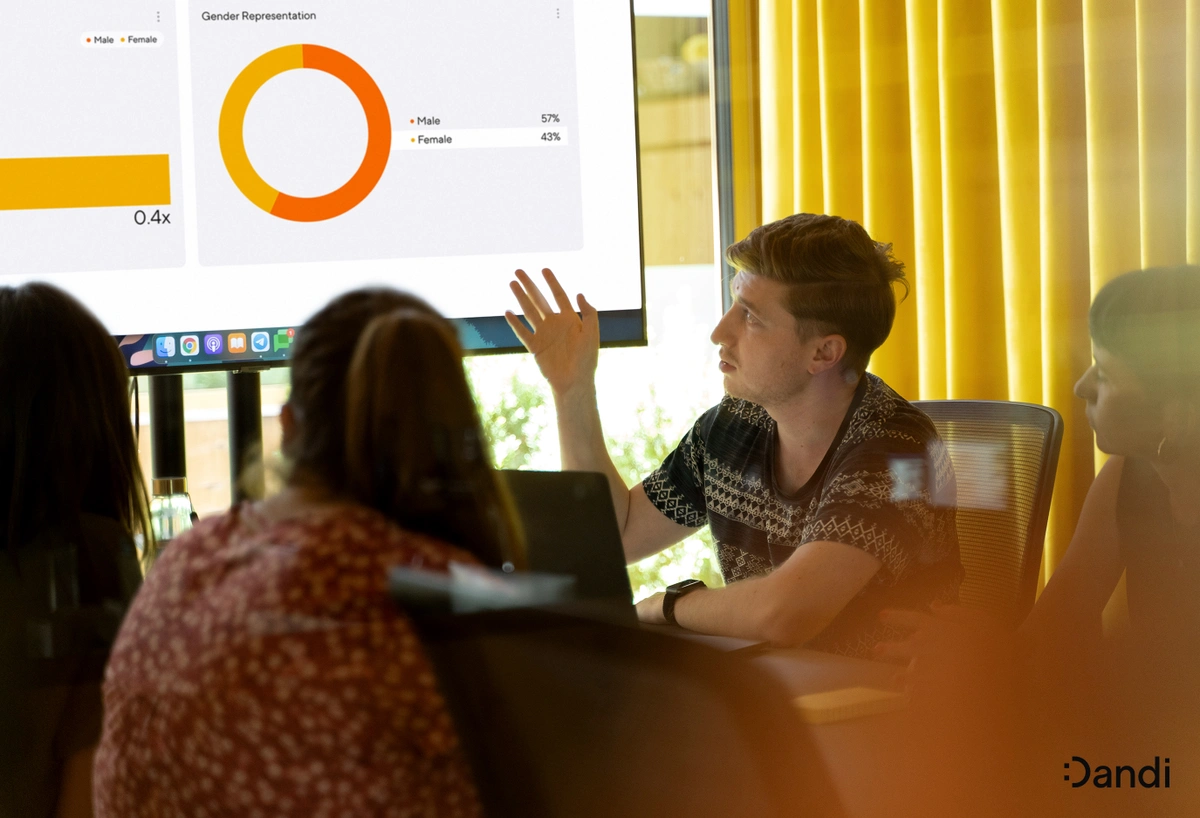
How we built Dandi
From the start, we envisioned Dandi as a comprehensive solution. Not just a bandaid, but a platform that could accelerate DEI progress by infusing organizations with new data and insights. We built a small but mighty team of HR, DEI, data, and design experts. And we formed a DEI Advisory Board of top thinkers and practitioners in the space.
One thing became clear early on: DEI is, in part, a math problem. In order to measure things like compensation or attrition, you first need to mathematically define them. No one had done it. So we built a set of formulas that would accurately represent key DEI measures. These mathematical engines are the backbone of Dandi today.
We also learned that few organizations possessed the data infrastructure or computing power needed to drive intersectional measurement at scale. Their people data sat siloed in different parts of the HR stack. And even if they could get all the data together, they often lacked the machine learning needed to run the calculations across entire organizations.
So we built Dandi around simple API integrations that bring together all of a company’s people data. And we engineered our platform on top of Google Cloud Platform, giving every customer access to one of the most powerful ML platforms available.
Math, data integrations, and computing power—these are the foundations of DEI analytics. Dandi brings them all together to generate over 10 million novel DEI insights for our customers. And we’re just getting started.
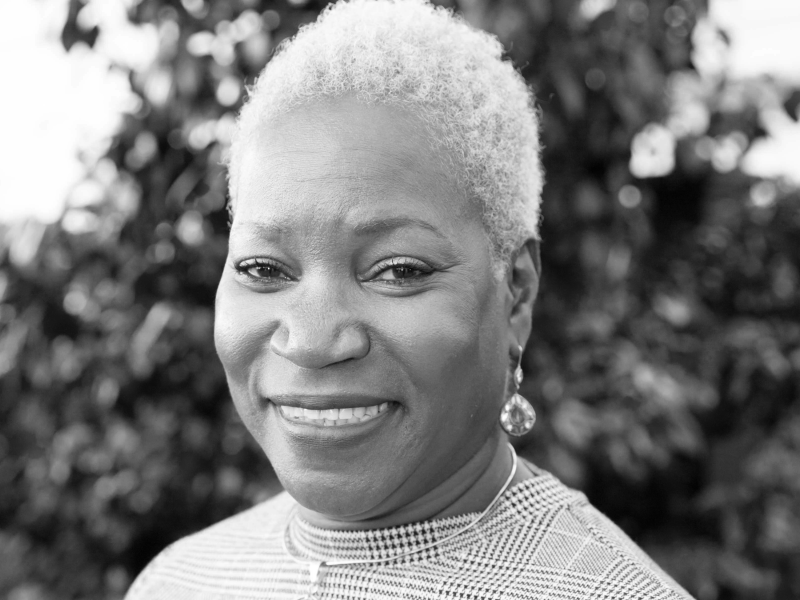
Having the right data helps teams focus and allocate resources toward what matters most. Dandi delivers these metrics quickly and easily.
Carol WatsonChief Inclusion Officer, BCW Global
What Dandi does
Dandi lets anyone—whether you’re a DEI practitioner, HR leader, C-suite member—track and measure the DEI metrics that matter to you. You don’t have to be a data scientist to use Dandi. (That said, data scientists love Dandi, too.) We also make it easy to share the insights you find in Dandi with beautiful, easy-to-export visualizations.
The most common use cases for Dandi today are DEI reporting, pay audits, benchmarking, and talent and recruiting analyses. Dandi fundamentally alters the speed, frequency, and accuracy of these efforts. You can run a pay audit in minutes, not months. You can create detailed reports more often, transforming how your company communicates with employees and shareholders about DEI progress.
Here are a few examples of Dandi at work:
- MiQ used Dandi to implement a cutting-edge data collection and reporting strategy
- Oscar Health used Dandi to establish key benchmarks and set a new standard for company-wide transparency
- Jimdo used Dandi to reduce company-wide pay gaps from 10% to 2.5%—in just 4 months
These early case studies point to the promise of Dandi. With proper data at their disposal, companies are making real progress faster than ever. Now we want to see what happens when more companies use Dandi.
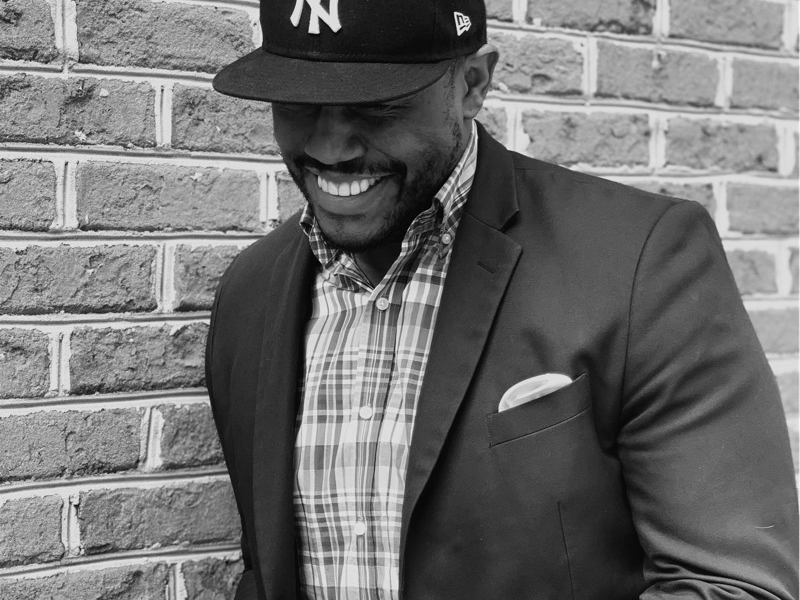
Dandi gave us the fuel to tell a much bigger story about DEI at Oscar.
Dwight PhyallProgram Manager, Diversity, Inclusion & Belonging , Oscar Health
What’s next
A world powered by data-driven DEI is better for employees. It means equal pay for equal work, and greater opportunities for everyone. These are fundamental shifts that can change careers, lives, families, and communities for the better.
It’s also better for businesses. Organizations that commit to DEI outpace their competitors on recruitment, sentiment, and profit. DEI is a powerful tool for stopping one of the biggest money-wasters in business: attrition. In the end, eliminating workplace bias and discrimination benefits everyone. DEI is not a zero-sum game. That’s why our mission is “Better business for all.”
Our vision is a world where DEI moves to the center of every business’s people decisions. Today that vision is one step closer to reality. But there’s much work to be done. Undermining the forces of inequality in our workplaces—including racism, sexism, and ageism—is bigger than Dandi. It will require new partnerships, policies, attitudes, and commitments across the economic, political, and educational spectrum.
We know we can’t do it all ourselves. But we can do our part. And we’re looking for others who are up for the challenge. In the coming months we’ll be hiring for roles across the company, including engineering, product, design, sales, marketing, and customer success. Please visit our Careers page or reach out at careers@itsdandi.com if you’re interested in working with us.
I’m thrilled with the product, team, and customer relationships we’ve already built. I look forward to sharing more about our progress in the years ahead.
Thanks for reading,
Jeff
Oh, one more thing:
If you’re curious about our name, this GIF explains it:

More from the blog
Announcing more powerful Dandi data visualizations
Team Dandi - Oct 23rd, 2024
The New Maturity Model for HR Data
Catherine Tansey - Sep 5th, 2024
Buyer’s Guide: AI for HR Data
Catherine Tansey - Jul 24th, 2024
Powerful people insights, 3X faster
Team Dandi - Jun 18th, 2024
Dandi Insights: In-Person vs. Remote
Catherine Tansey - Jun 10th, 2024
Introducing Dandi AI for HR Data
Team Dandi - May 22nd, 2024
5 essential talent and development dashboards
Catherine Tansey - May 1st, 2024
The people data compliance checklist
Catherine Tansey - Apr 17th, 2024
5 essential EX dashboards
Catherine Tansey - Apr 10th, 2024
Proven strategies for boosting engagement in self-ID campaigns
Catherine Tansey - Mar 27th, 2024
